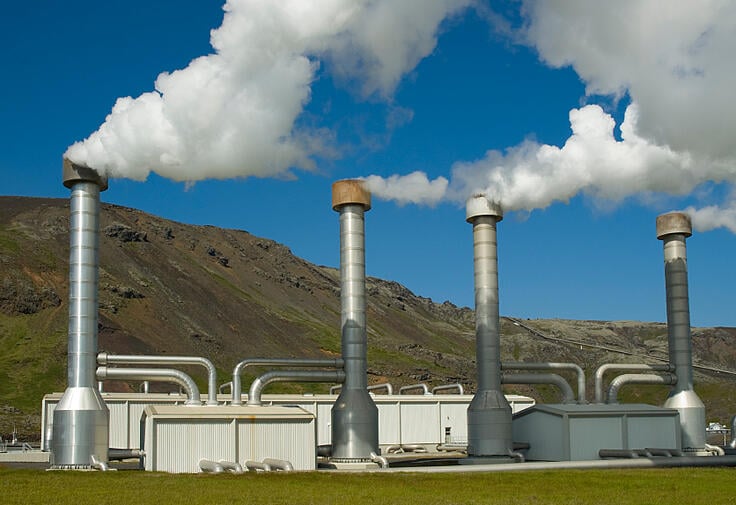The U.S. Environmental Protection Agency’s (EPA’s) plan to regulate carbon emissions is just the latest challenge facing the U.S. electric power system. Technological innovation is disrupting old ways of doing business and accelerating grid modernization. Earlier this year, AEE released Advanced Energy Technologies for Greenhouse Gas Reduction, a report detailing the use, application, and benefits of 40 specific advanced energy technologies and services. This post is one in a series drawn from the technology profiles within that report.

Geothermal power taps into the high-temperature hydrothermal resources of the earth to generate electricity. After drilling into underground reservoirs containing hot water or steam, the power plant brings these fluids to the surface and uses them to drive a turbine connected to a generator to produce electricity. The fluids are then returned to the reservoir. There are three main types of geothermal technologies, corresponding to high, medium and low-temperature resources: dry steam, flash steam and binary. Dry steam plants withdraw steam directly, where it is available, to drive a turbine. Flash steam, the most common geothermal technology in use today, pumps high-temperature, high-pressure geothermal fluids into a low-pressure tank, which causes the fluids to vaporize (flash); the vapor then drives a turbine. A binary cycle is a closed loop process where low-temperature geothermal fluids are used to heat a second working fluid with a low boiling point (e.g., refrigerants or propane), which drives a turbine. Binary cycle power plants are expected to dominate future markets because low-temperature fluids are easier to access. Another technology that has wide deployment potential but is still in the development stage is enhanced geothermal systems (EGS). EGS works by drilling deep wells into solid rock where there is heat and fracturing the rock to increase surface area. Water is then pumped into the wells to be heated and extracted for use in a binary cycle power plant. Because the natural hydrothermal resources are not needed, EGS can be deployed wherever suitable rock formations can be found.
Geothermal power plants are commonly used for baseload power, especially in the West, Alaska, and Hawaii, where hydrothermal resources are available. With over 3 GW of capacity installed, geothermal energy constitutes 1% of total electricity generated in the United States, and 8% of total non-hydro renewable electricity generation. The state of California generates 6% of its total electricity from geothermal resources. The Geysers, located in the Mayacamas Mountains north of San Francisco, is the world’s largest complex of geothermal power plants. The 15 power plants at The Geysers have the capacity to generate 725 MW, enough to power 725,000 homes.
New geothermal plants have relatively high capital costs, as well as ongoing costs for drilling new wells to maintain output over the long term. However, they have zero fuel cost and low operating and maintenance costs. They also operate at very high capacity factors, which make geothermal a good source of baseload power. A power plant built today would sell energy at about $0.05 per kWh; however, some plants sell power for as low as $0.03 per kWh. A flash or dry steam geothermal power plant emits only 1% to 4% of the carbon released by a coal plant for the same unit of electricity generated, while binary plants emit nearly zero emissions. In addition to emissions benefits, some plants produce valuable minerals such as zinc, silica, and sulfur.
